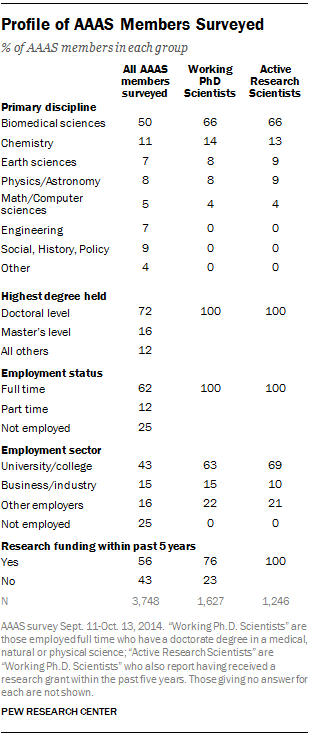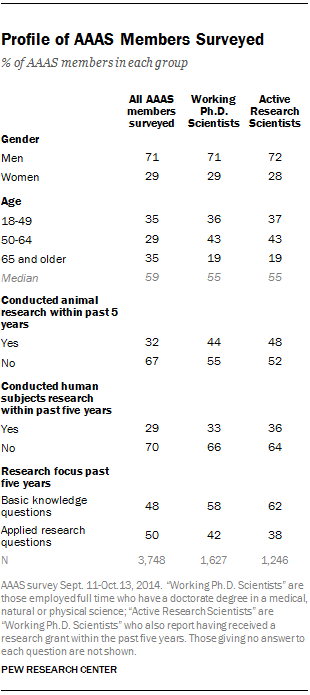
AAAS is the largest multidisciplinary scientific society in the world. Those eligible to participate in this survey reflect a broad definition of the professionally engaged scientific community in the U.S. They come from a range of disciplines and backgrounds, with about half identifying their primary specialty area in the biomedical disciplines. They are about evenly divided between those who consider their primary focus to be basic knowledge and applied research.
Compared with the total science and engineering workforce, AAAS members also are distinctive because a large share have a background in the biological and medical sciences and many are employed in the educational sector.10
Members of the AAAS are a highly educated group. An overwhelming majority has some postgraduate education, including 72% who have at least one doctoral level degree. Those in science and engineering occupations typically have more schooling than the general public. But, AAAS members as a whole stand out for their high levels of education even in comparison to the broader science and engineering workforce.11

A majority (56%) of AAAS members have received research funding within the past five years. Seven-in-ten AAAS members currently working full time have received funding within the past five years, as have 76% of those working in an academic setting.
Those with recent funding are most likely to have received federal grant funds for research (78%); 46% received direct research support from a university or college and about a third received funding from a private foundation. Smaller shares report funding from industry sources (25%), state government (15%) or from a scientific professional association (6%).
As a group, AAAS members differ from the general public in a number of ways. AAAS members are lopsidedly male (71%) and older than the general public as whole (median age 59 years). Both a gender skew favoring men and a relatively older age are also characteristic of the total U.S. workforce in science and engineering.12




